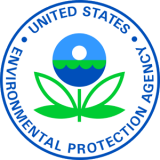Caney, Kansas, Residential Yards Site Added to Superfund National Priorities List
Weir, Kansas, site proposed for future addition to NPL
Environmental News
FOR IMMEDIATE RELEASE

EPA is also proposing to add another four sites to the NPL, including the Cherokee Zinc-Weir Smelter Site in Weir, Kansas, while removing one previously proposed site that was never finalized.
Under the Trump administration, the Superfund program has re-emerged as a priority to fulfill the Agency’s mission. EPA’s renewed focus has spurred action to clean up some of the nation’s most contaminated sites, protect the health of communities, and return contaminated land to safe and productive reuse for future generations.
“Communities with sites on the National Priorities List are a true national priority under the Trump administration,” said EPA Administrator Andrew Wheeler. “Many of the sites we are adding today are in vulnerable, low-income, and minority communities that deserve our attention. EPA is demonstrating our commitment to assist overburdened communities in becoming cleaner, healthier, and more prosperous places to live, work, and go to school.”
“Lead contamination in the small town of Caney, Kansas, is a result of a local smelting operation that dates back about a century. Adding the Caney Residential Yards Site to the NPL will help us protect this rural community by replacing soil in yards where families gather and children play,” said EPA Region 7 Administrator Jim Gulliford. “Protecting children and families from lead exposure is one of Region 7’s highest priorities.”
-
Caney Residential Yards in Caney, Kansas
- Blades Groundwater Plume in Blades, Delaware
- Clearwater Finishing in Clearwater, South Carolina
- Highway 100 and County Road 3 Groundwater Plume in St. Louis Park and Edina, Minnesota
- Henryetta Iron and Metal in Henryetta, Oklahoma
- Orange County North Basin in Orange County, California
The Caney Residential Yards Site and the NPL-proposed Cherokee Zinc-Weir Smelter Site are comprised of lead-contaminated residential yards, as a result of local smelting operations that date back about a century. In recent years, sampling by EPA and the Kansas Department of Health and Environment has identified residential properties where soils contain more than 400 parts per million (ppm) of lead, which is considered EPA’s action level for removal.
Learn more about the Caney Residential Yards Superfund Site on EPA’s website.
Before being added to the NPL, a site must meet the listing requirements and be proposed for addition to the list in the Federal Register, subject to a 60-day public comment period. The site will be added to the NPL if it continues to meet the listing requirements after the public comment period closes and the Agency has responded to any comments received.
-
Pioneer Metal Finishing Inc. in Franklinville, New Jersey
- Northwest Odessa Groundwater in Odessa, Texas
- Cherokee Zinc-Weir Smelter in Weir, Kansas
- Billings PCE in Billings, Montana
Background
The NPL includes the nation’s most serious uncontrolled or abandoned releases of contamination. The list serves as the basis for prioritizing EPA Superfund cleanup funding and enforcement actions. Only releases at sites included on the NPL are eligible to receive federal funding for long-term, permanent cleanup.
Superfund cleanups provide health and economic benefits to communities. The program is credited for significant reductions in birth defects and blood-lead levels among children living near sites, and research has shown that residential property values increase up to 24% within 3 miles of sites after cleanup.
Redeveloped Superfund sites can generate substantial economic activity. Thanks to Superfund cleanups, previously blighted properties are now being used for a wide range of purposes, including retail businesses, office space, public parks, residences, warehouses, and solar power generation. At 602 Superfund sites returned to productive use, 9,180 businesses operate with 208,400 employees earning more than $14.4 billion in annual income.
Community members are key partners at Superfund sites, and their early involvement leads to better cleanup decisions, including those about a site’s future use.
Today’s actions are, in part, the result of EPA putting the recommendations of the Superfund Task Force to work. EPA jump-started progress at sites that had long-standing obstacles; took early action to address immediate risks; increased the number of sites that can be returned to communities for reuse; and incentivized work by potentially responsible parties. Since the completion of the Superfund Task Force’s work one year ago, the recommendations have been integrated into the Superfund program and at all NPL sites. The Agency will continue to prioritize expediting cleanups to protect human health and the environment across the country.
# # #
Learn more about EPA Region 7
View all Region 7 news releases
Connect with EPA Region 7 on Facebook: www.facebook.com/eparegion7
Follow us on Twitter: @EPARegion7
